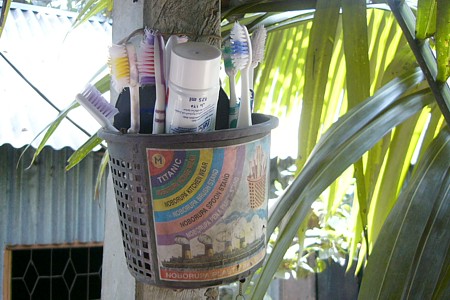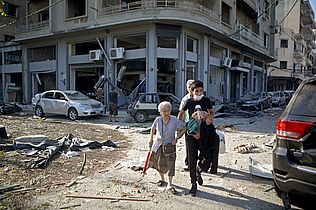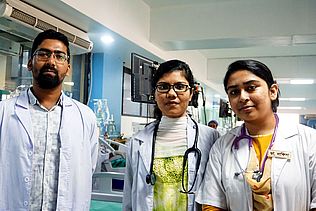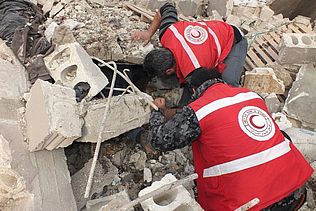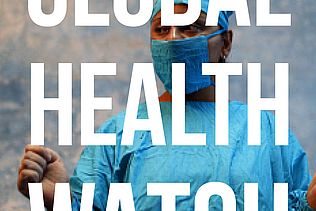Bangladesh is a land of many contradictions. While the defacto military takeover at the start of 2007 was welcomed by the majority of the population, as they hoped the „iron fist “would bring an end to the violent party conflicts and the corruption, many of the retired Generals are the Heads of industrial conglomerates and thus the main beneficiaries of the neoliberal economic course of the elite, which is oriented to export revenues. This however does not prevent them from regularly condemning the export orientation as the „Straitjacket of the World Bank and IMF Bank“.
Pharmaceutical Production in the Common Interest
The pharmaceutical policy is just as inconsistent. The government and all the country’s larger pharmaceutical companies are speculating on the exemption-rules of the World Trade Organisation, which allows „Least Developed Countries“ to legally replicate patented medicines until 2016. At the same time, the government is doing nothing to rescind the Patent laws in their own country which date back to colonial times. This would be the only way to take full advantage of these preference clauses. Medico and its partner in Bangladesh, Gonoshastaya Kendra (GK), also considered how we could make use of this special regulation to benefit those excluded from access to medicine. We scrutinized the idea of expanding GK’s production capacity so that cheap essential medicines could be produced for the global market.
In 2007 a planning workshop took place in Frankfurt, at which we brought together the colleagues from Bangladesh with the Brazilian pharmaceutical expert Eloan Pinheiro. We developed a project blueprint with which we won the support of the Deutsche Entwicklungsgesellschaft (DEG) as public donor to conduct an initial, more detailed feasibility study. The plan was hardly underway when reality caught up with our partner in Bangladesh. Following devastating floods in Summer, which put three quarters of the country under water for weeks, in the following November the rural South-West was hit by one of the worst cyclones in history. Thanks to a relatively well-functioning catastrophe warning system the storms this time „only“ claimed 3,000 to 4,000 victims – the last large-scale cyclone in 1992 had taken over 100,000 lives.
Emergency Aid and Reconstruction
As so often in their history Gonoshasthaya turned overnight into a nationwide-operating emergency relief organisation with the medical students and paramedics studying at GK assisting the experienced members of the medical emergency teams. Besides providing primary medical assistance, food and clothing were shipped to the most remote parts of the country. The remarkable routine with which the GK responded to the acute situation commanded the respect not only of foreign supporters such as Medico, Secours populaire from France or Merlin from Great Britain. The GK teamleaders also had a great deal of authority among the local State coordination committees and the presence of the emergency teams in the rural communities spurred the public health Centres and State-employed doctors to greater engagement – mainly to avoid giving the impression they were merely onlookers in this crisis. GK did more than just crisis management. Although the immediate damage had hardly been removed, our colleagues were already drawing up plans on how to deal with the food crisis caused by the destruction of the harvest and rising food prices. Together with the small farmers’ families GK is now looking into improved cultivation methods and the organisation of agricultural cooperatives which envisage the common use of agricultural equipment and the rational consolidation of small fields in order to farm much more effectively. Larger and more frequent harvests will fend off impending famines and thus curb the forced exodus into the big city slums. That is another anomaly in Bangladesh. Although this country of 150 million people is among the most densely-populated areas in the world, large areas lie waste due to a shortage of manpower, because the feudal land ownership structures force the poor to leave the land. The country cooperatives also offer the women a wide area of activities, traditionally one of the central features of Gonoshasthaya Kendra’s work. However, thirty five years of experience have shown the GK people that in the conservative communities this is not always enthusiastically received: a great deal of steadfastness will be needed.
There has however been one setback. For the moment nothing will come of the plans for international pharmaceutical production. GK’s capacities are more those of a local than a global „pharmaceutical player“. This is one of the findings of the DEG study which feared that GK would not be able to keep up with their profit-oriented competitors after all. Even the express endorsement of the development potential and the creativity of GK’s own research department can not offset these „hard facts“ of the global economy. But this does not mean the end of our joint involvement in the pharmaceutical sector. The raw materials warehouse, co-financed by Medico, and the new sewage treatment plant will be finished before the 2008 monsoon. After all, it is more urgent than ever to make high-quality medicines available to the poor in Bangladesh. GK will continue to work on this in the years to come– with the support of Medico.
Andreas Wulf
In 2007 Medico spent a total of 54,208 € on the cooperation with Gonoshastaya Kendra and for emergency relief in Bangladesh.

